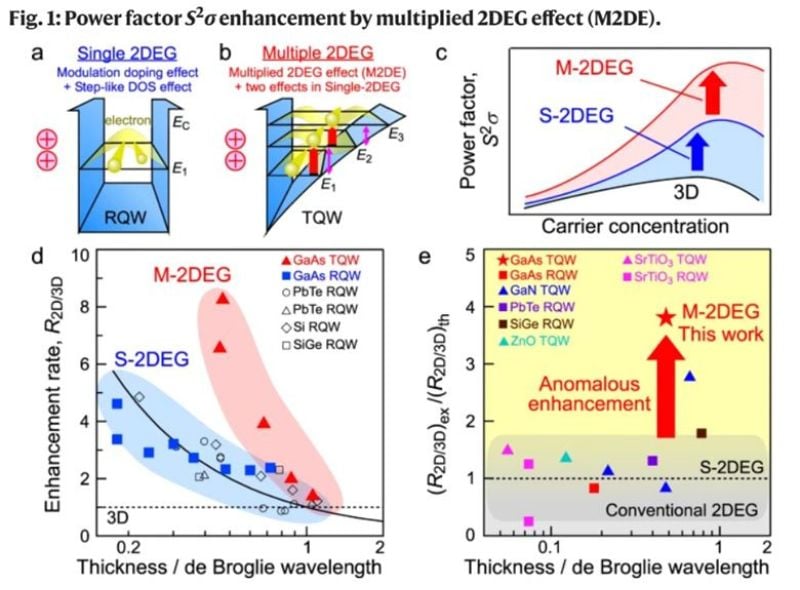Improving Thermoelectric Conversion to Power the Internet of Things
The Internet of Things offers interconnectivity for connected devices but creates a significant energy problem. A more efficient method of thermoelectric conversion could improve the IoT’s functionality.
The Internet of Things (IoT) has potential, but it depends on incredible amounts of energy. Thermoelectric generators (TEGs) and thermoelectric material (TM) are being developed and refined, but thermoelectric energy conversion has not been efficient enough to scale these technologies for widespread use.
Energy Internet of Things. Image used courtesy of Adobe Stock
A research team from Osaka University has improved thermoelectric conversion efficiency in a two-dimensional electron gas (2DEG) system, moving one step closer to an energy-efficient and functional IoT.
The Energy Demands of the IoT
The term IoT obscures the simple but profound reality of interconnected smart devices. Currently, most smart devices depend on the human user for inputs and commands. As more devices are connected to the Internet, it becomes possible to build bridges among the devices to maximize efficiency and performance.
The potential for dramatically improving traffic flow is only one possible example of how the IoT can transform everyday life. Smart cars can communicate with smart traffic lights, which can then communicate with smart drones monitoring highway congestion.
This transformation requires a great deal of energy. Within the next decade, the market value of the IoT is expected to surge to over $130 billion, and with this growth comes unprecedented electricity demands.
In addition to electricity demands, other complications are growing. Chipset supply chains are already strained, and semiconductor supplies are in jeopardy because of trade tensions between the U.S. and China.
Manufacturing new IoT tech could consume 34 terawatt-hours of electricity, not including the electricity needed to support network connections and communications as the IoT grows.
Thermoelectric Power to Support the IoT
Thermoelectric power, including thermoelectric generators (TEGs,) could efficiently transform heat into electricity. Thermoelectric energy might be an ideal power supply for the IoT precisely because the IoT requires localized and small-scale sources of energy for the countless devices that comprise the IoT.
The excess heat wasted by microelectronics offers one possible source for thermoelectric power, but maintaining a persistent plateau of thermoelectric conversion efficiencies has been a difficult obstacle. Because these efficiencies are too low, scaling the energy source for large applications has not been possible. As a result, this tech has been limited to small-scale applications like calculators, watches, or other wearable technology.
Using waste industrial heat to generate electricity. Image used courtesy of the Environmental Protection Agency
Heat sources for thermoelectric devices range from the sun to industrial heat from manufacturing to small-scale sources like the heat generated by laptops.
A research team in Japan focused on the two-dimensional electron gas (2DEG) system and ways to raise the Seeback coefficient, which will ultimately aid the production of more power.
Comparison of a single 2DEG versus a multiple 2DEG system. Image used courtesy of Nature
The team was able to confine electrons in a one-dimensional direction, leading to multiple subbands contributing to electrical conductivity and higher conversion efficiency. They improved the mobility of electrons within this system, potentially enabling more efficient conversion.
This increase in efficiency was significant. The team increased the power of thermoelectric conversion by a factor of 4, substantially outperforming typical 2DEG systems.
Thermoelectric Impacts on the IoT
That magnitude of efficiency improvement could have far-reaching implications for making thermoelectric energy scalable for a wide variety of applications. The team’s method will be particularly useful for any element-based material and can currently outperform other tech, such as resonant scattering, which is significantly less efficient.
The IoT still seems like a buzzword to some, but advances like this leap in thermoelectric conversion efficiency may lead to more compelling innovations as the IoT grows.









